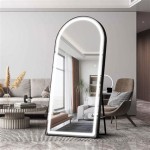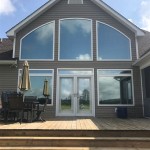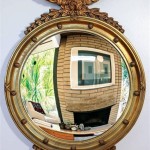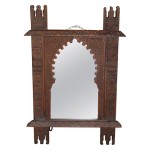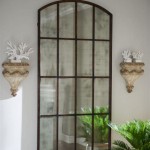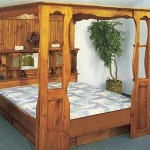How to Hang a Heavy Mirror Without Putting Holes in the Wall
Hanging a heavy mirror can be a daunting task, especially if you are worried about damaging your walls. Fortunately, there are several methods for securely hanging a heavy mirror without drilling holes. These methods rely on adhesive strips, command hooks, or temporary hanging systems that utilize existing features on your wall.
Using Adhesive Strips
Adhesive strips provide a simple and convenient way to hang lighter mirrors without drilling holes. However, for heavier mirrors, these strips might not offer sufficient support and could lead to the mirror falling. If you choose to use adhesive strips, prioritize heavy-duty strips designed for heavier objects. Ensure that the surface is clean and dry for maximum adhesion. Follow the manufacturer's instructions carefully, as excessive weight could cause the strip to detach, resulting in potential damage to your mirror or property.
Here are the steps involved:
- Clean the surface of your wall where you plan to hang the mirror using a mild cleaning solution and a soft cloth. Ensure that the surface is completely dry before proceeding.
- Select heavy-duty adhesive strips that are appropriate for the weight of your mirror. Read the manufacturer's instructions carefully to ensure that the strips are compatible with your wall surface and the weight of your mirror.
- Apply the adhesive strips to the back of the mirror according to the manufacturer's instructions. For added security, you can use multiple strips for larger or heavier mirrors.
- Carefully press the mirror against the wall, ensuring that the adhesive strips are firmly attached. Allow the adhesive to set for the amount of time specified by the manufacturer.
Utilizing Command Hooks
Command hooks offer a temporary solution for hanging lighter mirrors without drilling holes. These hooks are equipped with adhesive strips that can be easily removed without damaging the walls. However, Command hooks might not be strong enough for heavier mirrors, as exceeding their weight limit can lead to the hook detaching, potentially causing damage to your mirror or property.
Steps for using Command hooks include:
- Clean the surface of your wall where you plan to hang the mirror using a mild cleaning solution and a soft cloth. Ensure that the surface is completely dry before proceeding.
- Select Command hooks that are designed for the weight of your mirror. Consider choosing a larger hook or multiple hooks for heavier mirrors.
- Apply the adhesive strip to the back of the hook according to the manufacturer's instructions. Ensure that the hook is properly aligned with the desired hanging location.
- Press the hook firmly against the wall for the amount of time specified by the manufacturer. Allow the adhesive to fully set before hanging the mirror.
- Securely hang the mirror on the hook, ensuring that it is centered and level.
Employing Temporary Hanging Systems
Temporary hanging systems provide a secure and damage-free alternative for hanging heavy mirrors. These systems utilize existing features on your wall, such as a picture rail or a molding, to support the weight of the mirror. Some systems offer adjustable features, allowing users to hang the mirror at different heights or angles, providing flexibility in design and display.
Here are some common temporary hanging systems:
- Picture Rail Systems: Picture rails are commonly found in older homes. These rails are typically installed along the top of the wall, providing a secure mounting point for heavy items. This method requires the use of specialized hooks or brackets that attach to the rail, allowing you to hang the mirror securely.
- Molding Hooks: Molding hooks can be used to hang mirrors directly on existing molding, such as crown molding or chair rail. These hooks are designed to attach to the back of the molding, offering a hidden and secure attachment point for your mirror. Ensure that the molding is sturdy enough to support the weight of the mirror.
- Tension Rods: Tension rods offer a versatile solution for hanging heavy mirrors without drilling holes. They utilize the tension between the wall and the ceiling or between two walls to hold the mirror in place. Tension rods come in various sizes and materials, making it possible to find an option suitable for the weight of your mirror and the dimensions of your room.
When using any temporary hanging system, it is crucial to ensure that the chosen system is strong enough to support the weight of your mirror. It is recommended to test the system's strength before hanging the mirror to prevent potential accidents or damage to your mirror or property.

3 Simple Ways To Hang A Mirror On Wall Without Nails Wikihow
How To Hang A Heavy Mirror On Drywall Without Damaging It Or The Wall Quora

3 Simple Ways To Hang A Mirror On Wall Without Nails Wikihow

How To Hang A Heavy Mirror Without Nails 4 Alternative Ways Homelyville

3 Simple Ways To Hang A Mirror On Wall Without Nails Wikihow

How To Hang A Large Or Heavy Mirror

How To Hang A Bathroom Mirror Without Nails S Or Drilling Velcro Brand

3 Simple Ways To Hang A Mirror On Wall Without Nails Wikihow

How To Hang A Heavy Mirror Or Picture True Value

How To Hang A Hanging Mirror Without Accompanying Hardware

